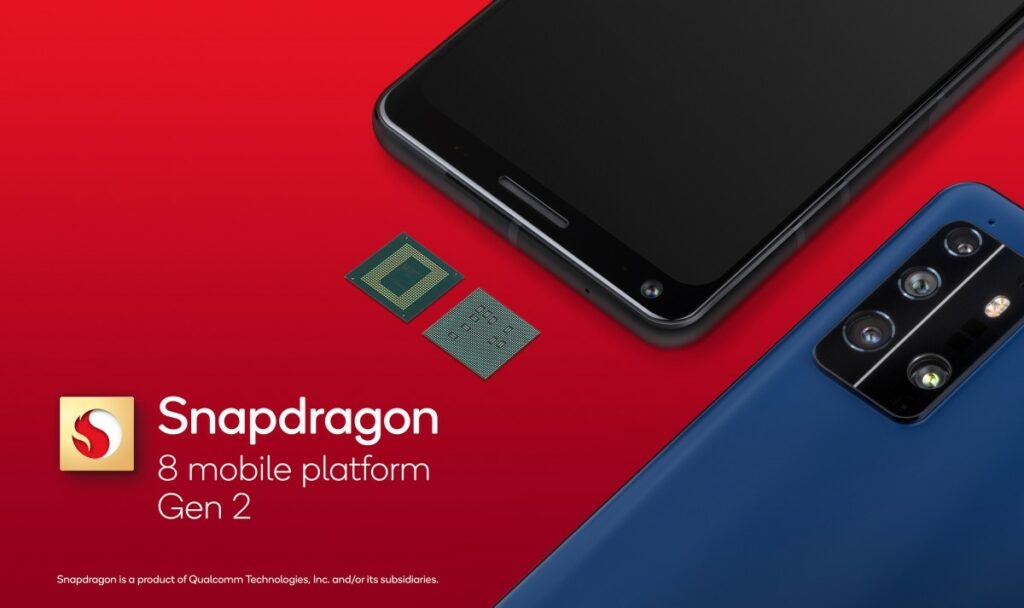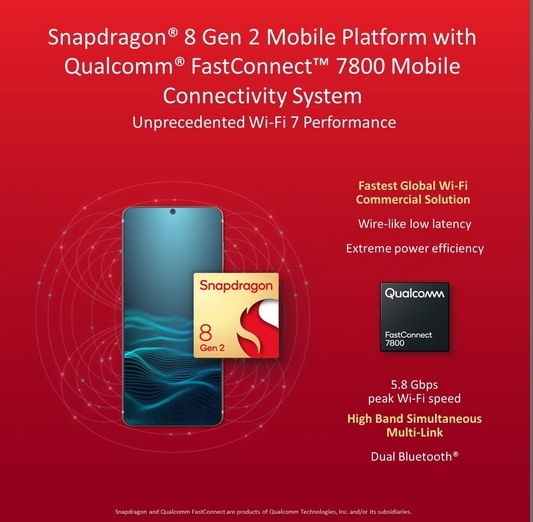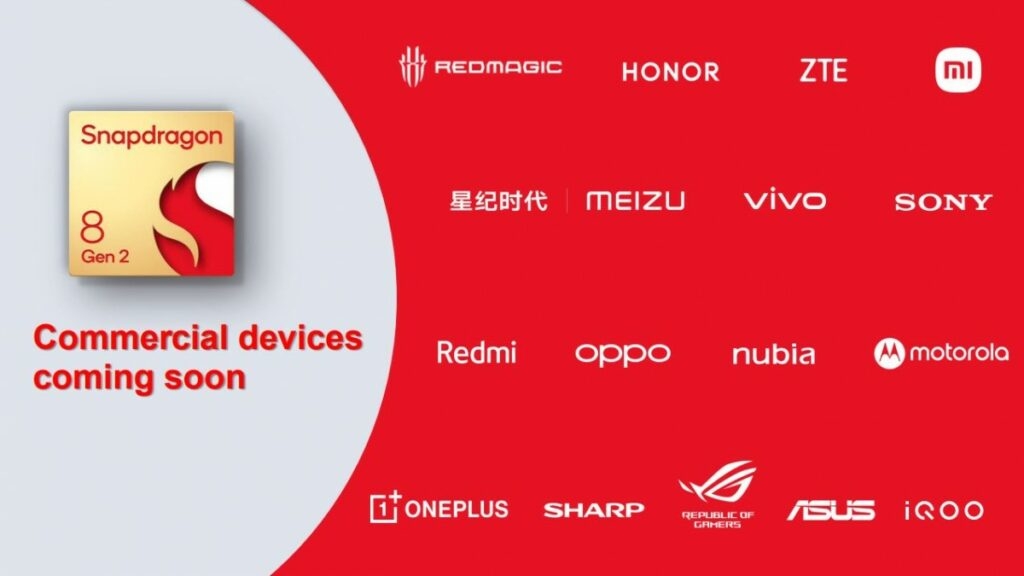The Qualcomm Snapdragon 8 Gen 2 brings improvements on all fronts over the Snapdragon 8 Gen 1. Let’s take a look at all the features & improvements we get in Qualcomm Snapdragon 8 Gen 2.
Qualcomm Snapdragon 8 Gen 2
Foremost, the Snapdragon 8 Gen 2 is based on 4mm architecture and, this time around from TSMC! (Same as Apple A16 Bionic). With the Snapdragon 8 Gen 2, the company has focused on improving power efficiency and still brings appreciable speed improvements with the chipset. As for CPU & GPU, the three new Kyro cores used in the Snapdragon deliver up to 35% high performance and 40% power efficiency! Although the clock speeds have not changed from the Snapdragon 8 Plus Gen 1, the composition is different! The single main Kryo core, which is based on Cortex X3, runs at 3.2GHz, thus delivering a single high-core performance. However, there are four performance cores this time than the usual three cores to handle multi-core load better and three efficiency cores instead of three. The four Cortex A715 cores have a peak speed of 2.8GHz, and the three Cortex A515 which is capped at 2.0GHz. Also, the Flagship chipset gets faster RAM & Storage tech, i.e., LPDDR5X & UFS 4.0. Well, for the speed nerds out there, LPDDR5X is up at 4,200GHz (From 32,00GHz) on its predecessor. The chipset supports displays with QHD+ resolution and up to 144Hz refresh rate or a 4K display with up to 60Hz and the company-enabled AV1 video codec, which streams up to 8K at 60fps with HDR. For the GPU, Qualcomm promises that it will deliver up to 35% in performance and up to 45% increase in power efficiency. The Snapdragon 8 Gen 2 offers Elite gaming features like the real-time hardware tracing ray system with HDR scene. The Chip also supports the Unreal Engine 5 Metahumans framework that allows gamers to experience the photorealistic human characters in the game. Also, this chip is the first to support Vulkan & Open GL ES 3.2. Talking about the Ai, The Qualcomm Snapdragon 8 Gen 2 comes with an improved Hexagon for Ai & machine learning capabilities, and the Hexagon processor also brought support for (Nvidia’s Ai precision format (INT4)) for the first time on a mobile chipset, which means 60% improved performance per Watt than earlier techniques. Read: Realme 10 Pro 5G Design & Specifications Leaked Qualcomm says that Hexagon is faster overall and claims that the Ai performance is increased to 4.5x which will help the camera Ai to identify which part of the picture is the face, hair, clothes, background, and more applying individual processing on them. Furthermore, Qualcomm said Ai delivers improved results in natural language processing with multi-language translation. On to the Cameras – the company boasted that the Sony sensors with the Digital Overlap HDR and Samsung HP3 (200MP) have been optimized to work better with the Snapdragon Image Signal Processor (ISP), and like its predecessor, the Snapdragon Gen 2 also gets a triple 18 -bit ISP which can handle up to three 36MP cameras or go up to 200MP on a single camera! For the Video nerds out there, the chipset can record up to 8K HDR at 30fps and take a 64MP image sententiously and 4K video at 120fps, slow-mo video in 720p at 960fps. It supports Dolby Vision, HDR10+, and HLG formats as well. Connectivity – The Snapdragon Gen 2 gets the Snapdragon X70 5G modem which supports both the Mm wave and the sub 5GHz 5G, although the peak download and peak upload speeds are the same as the predecessor, and the modem supports Dual SIM Dual Active, simply meaning 5G SIM active at the same time. The Flagship chipset is equipped with WiFi 7 and Snapdragon FastConnect 7800 system, which is an upgrade over the FastConnect 6900 present in the Snapdragon 8 Gen 1. There’s Bluetooth 5.3v. With the newest Qualcomm Sound system! the company claims that the chipset can deliver up to 48Khz lossless music streaming and the lowest latency of 48ms) when gaming. Moreover, there’s support for spatial audio with dynamic head tracking for the surround sound experience.
Qualcomm Snapdragon 8 Gen 2 Availability
The Flagship chipset, i.e., Snapdragon 8 Gen 2, will be adopted by major Android OEMs, including Asus ROG, Xiaomi, Meizu, Redmagic, ZTE, Motorola, Nokia, OnePlus, Sharp, Redmi, Nubia, IQOO, Honor, Vivo, Oppo, and Sony. Flagships phones are expected to be powered by the Snapdragon 8 Gen 2 by the end of 2022 and also the 2023 flagship smartphones. One thing to note here is that there was no mention of Samsung at all, which is pretty surprising since the upcoming Samsung Galaxy S23 series is expected to be powered by the Snapdragon 8 Gen 2 chipset. Read: Honor 80 Series Design Revealed Ahead of its Launch in China



